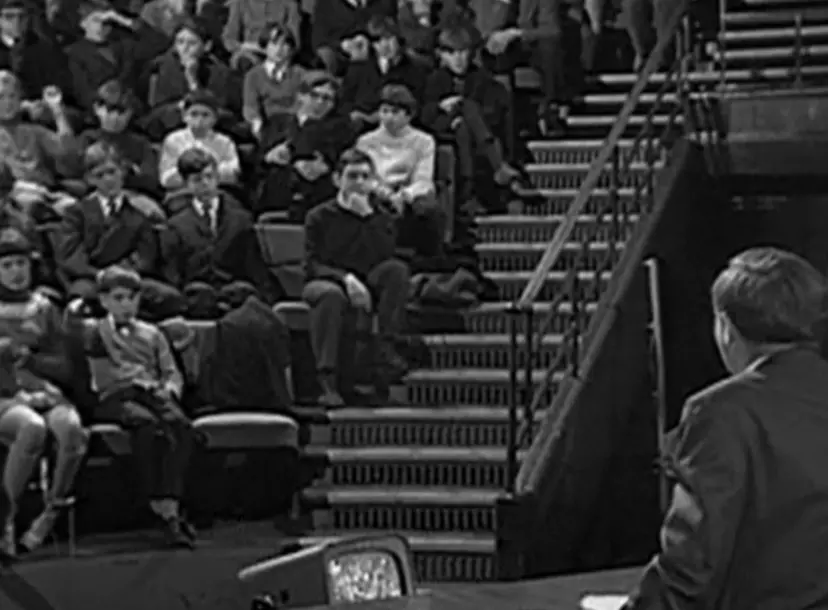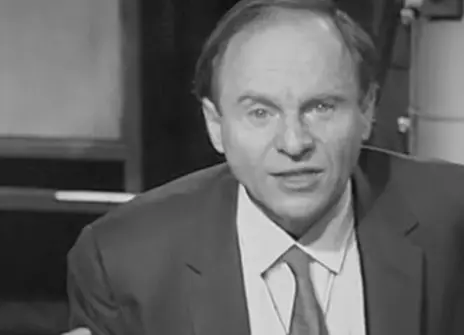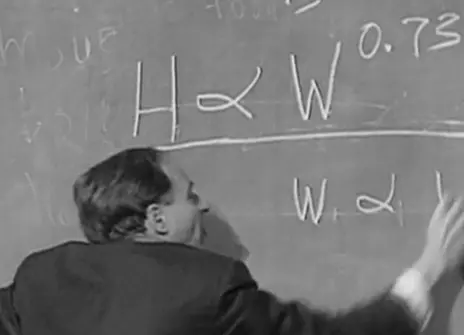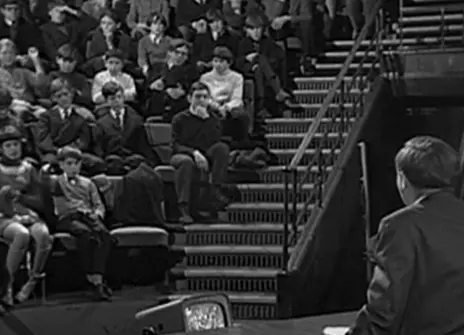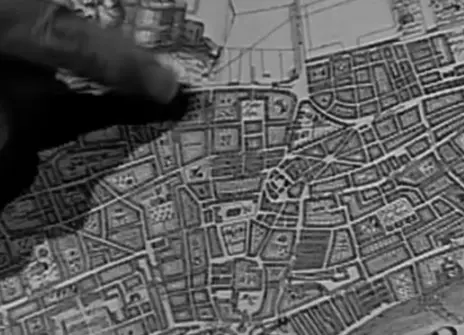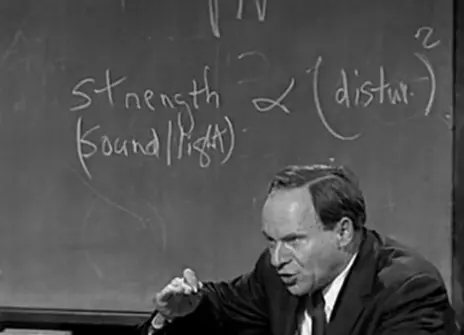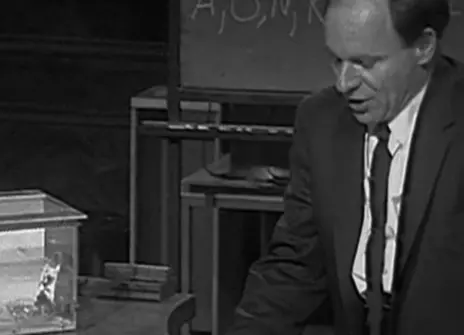Lecture 3 – A prodigious leap?
From the 1968 Lecture programme:
A flea, a hare, a man, and a horse all can jump about the same height if we measure fairly. When we change length scale we tend to forget the quantity of time; in all motions the scale of the moving object plays a part that is often surprising. The motions of micro-organisms and of the mist droplets in cloud reflect, above all, their small size. We extend this idea to study walking, running, floating, swimming, by large animals and small, and in man-made vehicles of all kinds.
About the 1968 series of CHRISTMAS LECTURES
In the 1968 CHRISTMAS LECTURES, physicist Philip Morrison explores the science of scale through the eyes of Jonathan (also knows as Dean) Swift's classic book, Gulliver's Travels.
From the 1968 Lecture programme:
It was the marvellous imaginary voyages of Lemuel Gulliver which made us see a world of petty six-inch patriots, or of sixty-foot people, large-minded and generous. Dean Swift was not writing science, but he lighted for our minds the meaning of size in our perception and in all human affairs.
In science the scale of things is often decisive. We human beings can view the world from one scale only, our own. But in that world are ants and whales, mountains and seas, planets, stars and atoms. A great deal of their nature is explainable as the consequence of their magnitude, for the fundamental building bricks of all the world, the particles of the physicist, fix a size built somehow into everything material.
